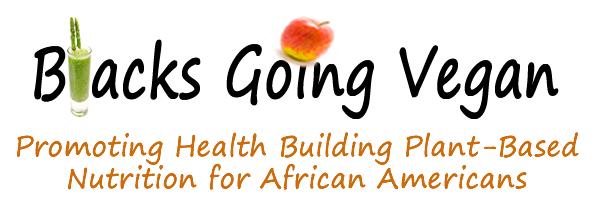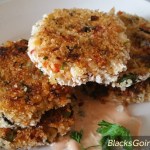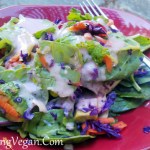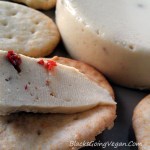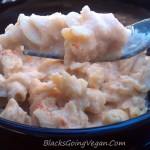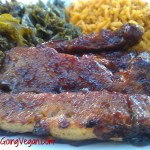Non-Dairy Sources of Calcium – Calcium in the Vegan Diet
Summary
Calcium, needed for strong bones, is found in dark green leafy vegetables, tofu made with calcium sulfate, calcium-fortified soy milk and orange juice, and many other foods commonly eaten by vegans. Although lower animal protein intake may reduce calcium losses, there is currently not enough evidence to suggest that vegans have lower calcium needs. Vegans should eat foods that are high in calcium and/or use a calcium supplement.
Our bones contain large amounts of calcium, which helps to make them firm and rigid. Calcium is also needed for other tasks including nerve and muscle function and blood clotting. These tasks are so important for survival, that, when dietary calcium is too low, calcium will be lost from bone and used for other critical functions. The body tightly controls calcium in the blood, so measuring blood calcium levels cannot assess calcium status.
Because of heavy promotion by the American dairy industry, the public often believes that cow’s milk is the sole source of calcium. However, other excellent sources of calcium exist. Sources of well-absorbed calcium for vegans include calcium-fortified soy milk and juice, calcium-set tofu, soybeans and soy nuts, bok choy, broccoli, collards, Chinese cabbage, kale, mustard greens, and okra 1. Grains, beans (other than soybeans), fruits, and vegetables (other than those listed) can contribute to calcium intake but cannot replace these key foods.
Table 1 shows the amount of calcium in selected foods. When you realize that there is as much or more calcium in 4 ounces of firm tofu or 3/4 cup of collard greens as there is in one cup of cow’s milk, it is easy to see why groups of people who do not drink cow’s milk still have strong bones and teeth.
The calcium recommendation for adults age 19-50 years and men 51-70 years is 1000 mg per day 2. An intake of 1200 mg of calcium is recommended for women over 51 years and for men over 70 2. While not all studies find a reduced risk of fracturing bones to be associated with higher calcium intakes 3,4, research does suggest that adequate calcium and vitamin D can reduce the risk of fractures and osteoporosis as people age 5.
There are a limited number of studies of vegans, most of which find low bone density, as well as low calcium intakes 6-8. Results of a meta-analysis that combined several studies predicted that vegans would have a slightly (perhaps 10%) higher risk of bone fracture compared to non-vegetarians 8. One study found that, when calcium intakes were adequate (greater than 525 mg/day in this study), vegans had no greater risk of breaking a bone than did non-vegetarians with similar calcium intakes 7. Since many factors can affect calcium needs, we recommend that vegans try to meet the recommendations for the general public.
Our Vegan Food Guide indicates good sources of calcium from several food groups. By choosing the suggested number of servings of calcium-rich foods daily, vegans should meet calcium needs. Table 2 shows several menus that contain more than 1000 mg of calcium.
The amount of calcium in tofu depends on the coagulating agent used to precipitate the soy protein in the process of making tofu. Calcium sulfate and nigari (magnesium chloride) are two commonly used agents. The agent used will be listed on the label under ingredients. Tofu that is prepared with calcium sulfate will contain more calcium than tofu made with nigari.

To calculate how much calcium is in the tofu you buy, look at the label. Calcium content will be listed as percent of the Daily Value. Since the current Daily Value for calcium is 1000 mg, multiply the percent Daily Value by 10 to get the amount of calcium (in milligrams) in one serving. For example, tofu with 10% Daily Value for calcium would have 100 mg of calcium in one serving.
Protein’s effect on calcium needs and bones remains uncertain. Some studies show that diets that are high in protein, especially animal protein, result in increased losses of calcium in the urine 9 and may be associated with increased fracture risk 10,11. These effects of protein may be especially important in those with low calcium intakes 12. Other studies find advantages of a higher protein intake including promotion of calcium absorption 13, reduced risk of fracturing a bone 14, and increased bone density 15,16. Until we know more, our best recommendation is that vegans should strive to meet calcium recommendations and to have adequate, but not excessive, amounts of protein.
Other factors in bone health include vitamin D, sodium, and physical activity. Sodium increases the amount of calcium lost in urine (about 20 mg of calcium are lost with each gram of sodium in the diet) and higher dietary sodium is associated with lower bone density 17. Regular weight-bearing exercise such as walking or running helps to promote strong, healthy bones. Exercise can also improve balance and flexibility, important factors in preventing falls.
Table 2:
Two Sample Menus Providing More Than
1,000 Milligrams of Calcium
Breakfast
- 1 serving Cindy’s Light and Fluffy Pancakes (p. 23)† — 195 mg
- 1 cup calcium-fortified soy milk — 300
Lunch
- 1 serving hummus on pita bread (p. 27) — 178
- 6 dried figs — 82
- 1/4 cup almonds — 94
Dinner
- 1 serving scrambled tofu and bok choy over brown rice (p. 96) — 190
- 1 serving green salad and tangerine dressing (p. 39) — 30
- 1 serving chocolate pudding (p. 114) — 92
Day One Total Calcium = 1161 mg
Breakfast
- 1 serving Tropical Fruit Smoothie (p. 16) — 102
- 1 toasted medium bagel topped with — 93
- 2 Tbsp. almond butter — 111
Lunch
- 1 serving mini pizzas (p. 34) — 235
- 1 serving creamed spinach (p. 68) — 121
Dinner
- 1 serving Lemon Rice Soup (p. 46) — 82
- 1 serving Tofu Squash Burgers (p. 102) — 135
- 1 cup steamed broccoli — 62
- 1 serving chocolate pudding (p. 114) — 92
Day Two Total Calcium = 1033 mg
[clear-line]
†Note: Page Numbers refer to recipes in the book Simply Vegan.
Additional foods should be added to these menus to provide adequate calories and to meet requirements for nutrients besides calcium. There are factors that increase the risk of osteoporosis and that cannot be changed. These include small frame size, female gender, aging, heredity, being Caucasian or of Asian or Latino descent, early menopause, and prolonged immobilization. Other factors like cigarette smoking, excessive alcohol, physical inactivity, and inadequate calcium and vitamin D (see Chapter on Vitamin D) are under our control. Vegans of all ages can promote bone health by consuming enough calcium and protein, getting adequate vitamin D, limiting use of sodium, and getting regular exercise, especially weight-bearing exercise.
Calcium in the Vegan Diet
The Vegetarian Resource Group
by Reed Mangels, PhD, RD
From Simply Vegan 5th Edition
References
- Weaver CM, Plawecki KL. Dietary calcium: adequacy of a vegetarian diet.Am J Clin Nutr 1994;59 (suppl):1238S-1241S.
- IOM (Institute of Medicine). Dietary Reference Intakes for Calcium and Vitamin D. Washington, DC: The National Academies Press, 2011.
- Feskanich D, Willett WC, Colditz GA. Calcium, vitamin D, milk consumption, and hip fractures: a prospective study among postmenopausal women. Am J Clin Nutr 2003;77:504-11.
- Warensjö E, Byberg L, Melhus H, et al. Dietary calcium intake and risk of fracture and osteoporosis: prospective longitudinal cohort study. BMJ 2011 May 24;342.
- Tang BM, Eslick GD, Nowson C, et al. Use of calcium or calcium in combination with vitamin D supplementation to prevent fractures and bone loss in people aged 50 years and older: a meta-analysis. Lancet2007;370:657-66.
- Chiu JF, Lan SJ, Yang CY, et al. Long-term vegetarian diet and bone mineral density in post-menopausal Taiwanese women. Calcif Tissue Int1997;60:245-9.
- Appleby P, Roddam A, Allen N, Key T. Comparative fracture risk in vegetarians and nonvegetarians in EPIC-Oxford. Eur J Clin Nutr 2007; 61:1400-6.
- Ho-Pham LT, Nguyen ND, Nguyen TV. Effect of vegetarian diets on bone mineral density: a Bayesian meta-analysis. Am J Clin Nutr 2009; 90:1-8.
- Kerstetter JE, O’Brien KO, Insogna KL. Low protein intake: the impact on calcium and bone homeostasis in humans. J Nutr 2003;133:855S-61S.
- Frassetto LA, Todd KM, Morris RC, Jr., et al. Worldwide incidence of hip fracture in elderly women: relation to consumption of animal and vegetable foods. J Gerontol A Biol Sci Med Sci 2000;55:M585-92.
- Sellmeyer DE, Stone KL, Sebastian A, et al. A high ratio of dietary animal to vegetable protein increases the rate of bone loss and the risk of fracture in postmenopausal women. Am J Clin Nutr 2001;73:118-22.
- Meyer HE, Pedersen JI, Loken EB, et al. Dietary factors and the incidence of hip fracture in middle-aged Norwegians. A prospective study. Am J Epidemiol 1997;145:117-23.
- Kerstetter JE, O’Brien KO, Caseria DM, et al. The impact of dietary protein on calcium absorption and kinetic measures of bone turnover in women. J Clin Endocrinol Metab 2005;90:26-31.
- Munger RG, Cerhan JR, Chiu BC. Prospective study of dietary protein intake and risk of hip fracture in postmenopausal women. Am J Clin Nutr1999;69:147-52.
- Kerstetter JE, Looker AC, Insogna KL. Low dietary protein and low bone density. Calcif Tissue Int 2000;66:313.
- Surdykowski AK, Kenny AM, Insogna KL, Kerstetter JE. Optimizing bone health in older adults: the importance of dietary protein. Aging Health2010;6:345-57.
- Bedford JL, Barr SI. Higher urinary sodium, a proxy for intake, is associated with increased calcium excretion and lower hip bone density in healthy young women with lower calcium intakes. Nutrients 2011; 3:951-61.
- Weaver CM, Heaney RP, Nickel KP, et al. Calcium bioavailability from high oxalate vegetables: Chinese vegetables, sweet potatoes, and rhubarb. J Food Sci 1997;62:524-525.
Category: Veganism and African Americans
